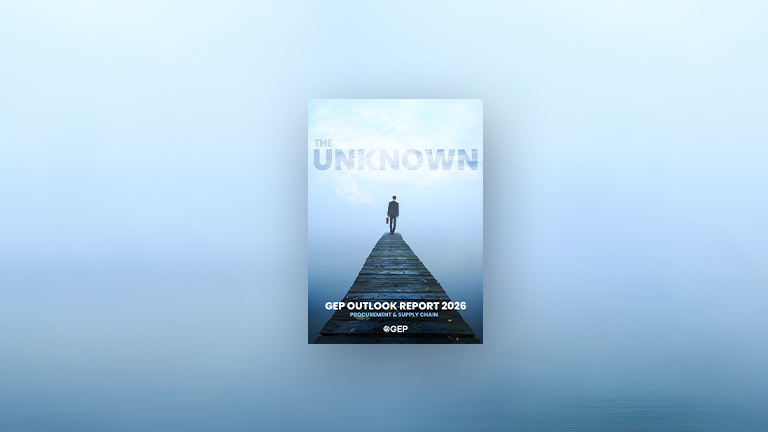
The Hidden Risks in Your SaaS Vendor Management Stack — And Six Ways to Get Ahead of Them
- Keep an up-to-date inventory of all your SaaS tools and assess their risk levels.
- Make risk assessment part of your everyday procurement decisions and contract planning.
- Always have contingency plans in place in case a key SaaS vendor fails.
December 17, 2025 | Procurement Software 5 minutes read
What is SaaS Vendor Management — And Why It Matters
SaaS vendor management is the process of selecting, negotiating, monitoring, and optimizing relationships with your software providers. The goal: ensure every SaaS investment supports business goals, stays secure and compliant, and delivers value.
Without it, SaaS costs can spiral, risks go unmanaged, and performance can slip.
Key Aspects
Vendor Selection
Choose vendors that fit your current needs and future growth. Assess reputation, scalability, cost, support quality, security, and compliance — not just product features.
Contract Negotiation
Negotiate clear terms upfront: scope, pricing, SLAs, data ownership, security requirements, liability, and termination. This protects your interests and avoids surprises later.
Performance Management
Regularly review whether vendors meet agreed SLAs and deliver business value. Take action when they don’t.
Compliance
Verify that vendors meet required standards (ISO 27001, SOC 2, HIPAA, PCI DSS, etc.) and continue to monitor compliance over time. If they fall short, so do you.
Cost Optimization
Track SaaS spend. Eliminate unused licenses, consolidate overlapping apps, and renegotiate contracts to reduce waste and maximize ROI.
Security
Enforce strong data protection and security practices in every vendor relationship. Your vendors are part of your ecosystem — any weak link is your risk.
Vendor Governance
Establish clear policies and processes for managing vendors. This ensures consistency, mitigates risk, and supports compliance across the board.
Communication
Maintain regular, open communication with vendors. It helps resolve issues quickly and supports better collaboration.
Benefit | Description |
|---|---|
| Reduced Costs | Visibility into SaaS spend lets you cut redundant costs and negotiate better deals. |
| Improved Security | Consistent enforcement of security practices reduces data breach risk. |
| Enhanced Compliance | Ongoing monitoring helps vendors stay compliant, protecting your business. |
| Stronger Vendor Relationships | Structured management and clear communication foster trust and better service. |
Why is SaaS Vendor Risk Management Necessary
Most procurement teams these days run on SaaS. You probably have the tools handling everything from contracts and spend tracking to demand planning and supplier coordination. Although they do make life easier, there are still challenges.
Because the truth is, when you rely on software from vendors, you also take on their problems. If they have a data breach, mess up compliance, or suddenly go under? That’s on your doorstep too. Your team could be left scrambling.
The good news? You don’t need to sit around hoping for the best. With a few smart moves, you can spot risks early, build some backup plans, and keep your operation steady even if a vendor slips.
Here are six ways to do that — no fluff, just stuff that works in the real world.
1. Know Your SaaS Landscape
You can't manage what you don’t know you have. It’s surprising how many companies don’t have a clear picture of all their SaaS vendors.
Here’s what to do:
- Audit Every SaaS Tool: This includes those “shadow IT” apps bought without procurement’s say-so.
- Rank Vendors by Risk: Figure out which are critical, important, or low risk based on the data they handle and how much damage they could cause.
- Assign Owners: Make sure someone is responsible for risk management per vendor category.
Why bother? Because a contract tool holding sensitive supplier data needs more oversight than a cloud note app one team uses.
2. Verify Security with Real Standards
Imagine a SaaS vendor handling payments but without SOC 2 or solid encryption. That’s a red flag, even if they claim “bank-level security.” According to IBM’s Cost of Data Breach Report 2025, the global average cost of data breaches reached $4.4 million.
Vendor self-reports aren’t enough. Use objective security checks.
Do this:
- Ask for certifications like SOC 2 Type II, ISO 27001, or CSA STAR.
- Use external tools (BitSight, Security Scorecard) to assess vendor security.
- Include audit rights in contracts.
3. Tailor Contracts to Risk
Legal protection is key if vendor failures affect orders or compliance. Contracts aren’t just about cost. They’re your risk shield.
Focus on:
Customizing contract terms by vendor risk level. High-risk vendors should have breach notification windows (like 24 hours), indemnities, and required security audits.
Setting clear SLAs for uptime, support, backups, and recovery.
Building in exit strategies covering data ownership, export rights, and transition help.
Pro Tip: Use ISO 27036-aligned contract templates for supplier security.
4. Keep Monitoring — Don’t Stop at Onboarding
A one-time check won’t cut it. Vendor risks evolve fast.
Steps to take:
- Use automated scans for issues like expired SSL certs or leaked passwords.
- Get alerts for big changes — management shifts, lawsuits, credit rating drops.
- Schedule quarterly or semi-annual reviews for your most critical vendors.
If your supplier onboarding platform crashes for hours during peak season, you need to know immediately — not months later.
5. Make Risk Assessment Part of Your Everyday Procurement
Risk isn’t something you just add on at the end. It needs to be part of how you do procurement, all the time.
So, how do you make that happen? Start by making risk scores a must when you bring in new SaaS vendors. Look at things like their security, if they follow the rules, and any past problems they’ve had. It’s not just about what the software does — it’s about how safe it is.
When contracts are high risk — say, if they deal with sensitive info — get your IT team to sign off. They’ll catch stuff you might miss.
And don’t hide that info. Put things like compliance or past breaches where your team can easily see it — like on dashboards. That way, everyone’s in the loop and surprises don’t sneak up on you.
For example, GEP SMART™ does this well. It mixes risk scores into how suppliers are judged, helping buyers make smarter calls by looking at risk along with price and features.
6. Always Have a Backup Plan Because Things Can Go Wrong
No vendor’s perfect. They might go out of business, get hacked, or drop a service suddenly. So, it’s smart to have a plan before that happens.
Here’s what you can do:
- Know how to exit your big SaaS contracts. Figure out how to get your data back, who on your team handles what, and what backups you have ready.
- Do practice runs for events like data breaches or outages so your team’s ready to jump in.
- Keep copies of important data at your end, not just trusting the vendor. That’s your safety net.
Being resilient isn’t about never having problems. It’s about bouncing back fast when things go sideways. Make sure your vendor plans tie into your bigger supply chain continuity plans so you’re covered.
Wrapping Up
SaaS vendor risk is more complex and urgent than ever. With sensitive data and core functions in the cloud, a structured, proactive approach is essential.
Don’t treat SaaS risk as only an IT issue. Bring it into procurement decisions, contracts, monitoring, and risk mitigation. That’s how you build resilience, stay compliant, and keep your supply chain running smoothly.
If you want a platform designed to help with this, GEP SMART™ offers integrated SaaS risk management tools tailored for procurement teams today.



